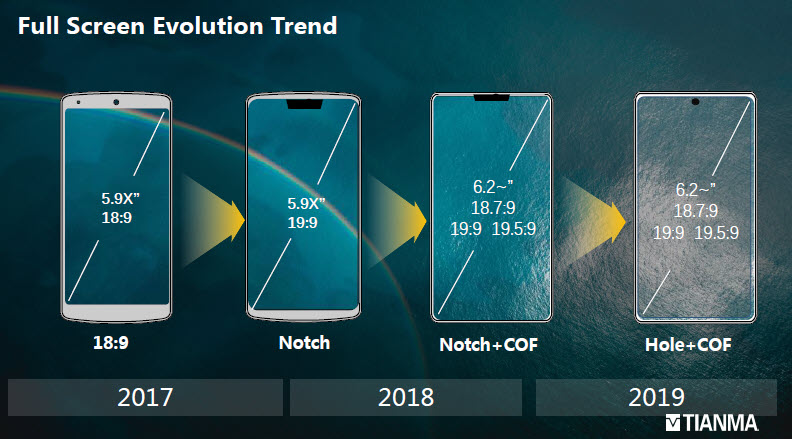 Charles Peng is from Tianma and he talked about the new era of mobile phone displays.
Charles Peng is from Tianma and he talked about the new era of mobile phone displays.
5G will soon be available with high speed and low latency enabling new AI applications. The smartphone will be a key hub for new applications and of course the display is a key interface to the smartphone.
The smartphone market is around 1.5 billion units per year, but China saw a decline in volume the second half of 2017. That was because 4G penetration had already reached 70%, so the 4G market was effectively saturated. One upgrade is to change the display from 16:9 to wider formats, but that delayed the release of new models later in the year. Also the new models increased in price – another factor in the market growth slowing. On the other hand, there has been a move to higher cost products in that market.
Displays have moved to higher performance in resolution and then to full screen with a possible shift to foldable form factors in the future. There is more integration of new functions such as fingerprint under the display and Tianma thinks this will be important in the second half of this year. Full screen smartphones became the standard very quickly and the company expects 64% penetration this year, going to 77% in 2019 and 88% by 2020.
The notch in the display is expected to become a ‘hole in the display’ concept with very small bezels on all four sides. Tianma believes it has the highest share of full screen displays in 2017 at 26% of the market.
 Several speakers highlighted the concept of moving from a notch to a hole in the display.
Several speakers highlighted the concept of moving from a notch to a hole in the display.
Turning back to 5G, entertainment functions will be very much improved and games will become more popular and higher resolutions will be needed. That will also apply to video display, as well. Video will be the key driver for more content consumption. Smartphones will be the hubs for IoT applications. Flexible displays should be good solutions for these applications. Full screen shape with flexible and foldable functions will be needed and high resolution video, but combined with lower power consumption. More functions will be integrated into the display including in-cell touch and fingerprint recognition.
As well as smartphones, the firm is supplying displays for smartwatches, tablets and notebooks with high resolution enabled by LTPS backplanes.
Tianma will be in mass production of flexible AMOLEDs by the end of this year. In-cell touch is already mainstream and force touch is being developed. The company has four fabs in China in G5.5 and G6 for LTPS LCD and AMOLED.

